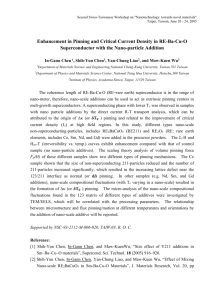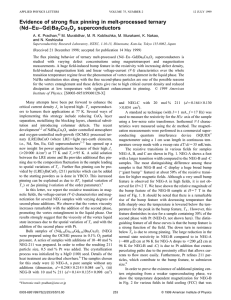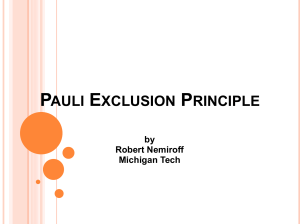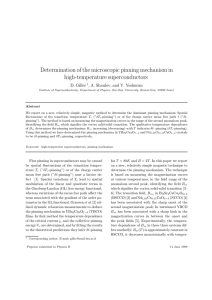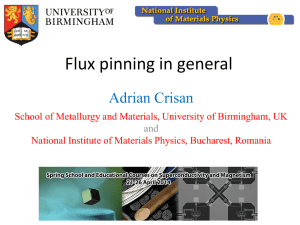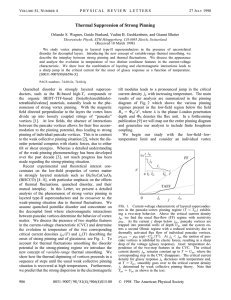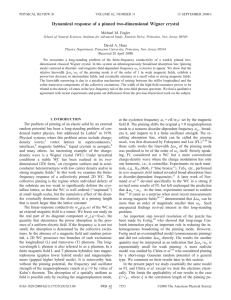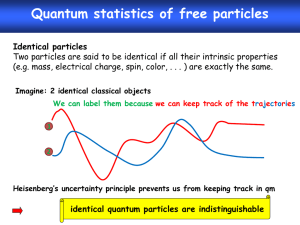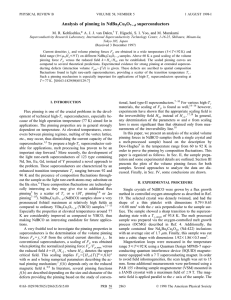Pinning of Fermionic Occupation Numbers
advertisement
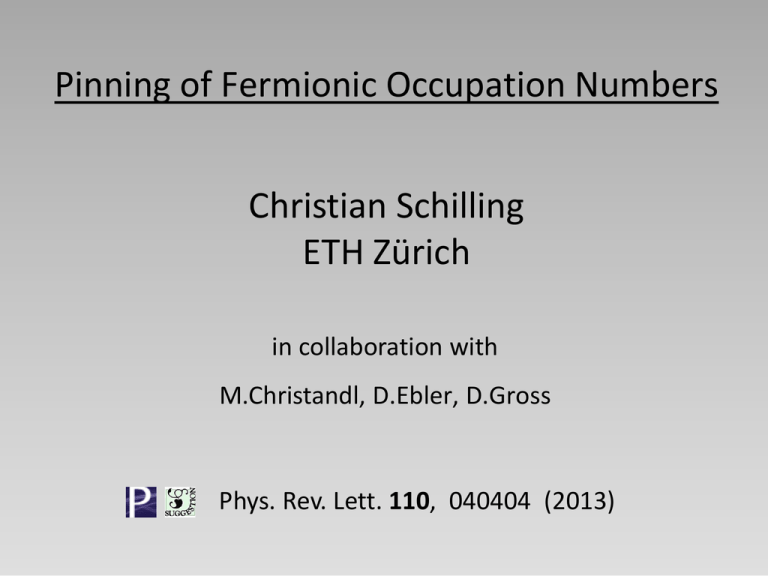
Pinning of Fermionic Occupation Numbers Christian Schilling ETH Zürich in collaboration with M.Christandl, D.Ebler, D.Gross Phys. Rev. Lett. 110, 040404 (2013) Outline 1) Motivation 2) Generalized Pauli Constraints 3) Application to Physics 4) Pinning Analysis 5) Physical Relevance of Pinning 1) Motivation Pauli’s exclusion principle (1925): `no two identical fermions in the same quantum state’ mathematically: (quasi-) (quasi-) pinned by pinned by relevant when Aufbau principle for atoms strengthened by Dirac & Heisenberg in (1926): `quantum states of identical fermions are antisymmetric’ implications for occupation numbers further constraints beyond but only relevant if (quasi-) pinned (?) ? mathematical objects ? N-fermion states partial trace 1-particle reduced density operator natural occupation numbers translate antisymmetry of to 1-particle picture 2) Generalized Pauli Constraints describe this set Q: Which 1-RDO are possible? (Fermionic Quantum Marginal Problem) A: unitary equivalence: only natural occupation numbers relevant Polytope 1 0 [A.Klyachko., CMP 282, p287-322, 2008] [A.Klyachko, J.Phys 36, p72-86, 2006] 1 Pauli exclusion principle polytope = intersection of finitely many half spaces facet: half space: Example: N = 3 & d= 6 [Borland&Dennis, J.Phys. B, 5,1, 1972] [Ruskai, Phys. Rev. A, 40,45, 2007] 3) Application to Physics Position of relevant states (e.g. ground state) ? or here ? (pinning) 1 here ? point on boundary : 0 kinematical constraints generalization of: 1 decay impossible N non-interacting fermions: with N-particle picture: 1-particle picture: ( ) effectively 1-particle problem with solution ( ) Slater determinants Pauli exclusion principle constraints 1 exactly pinned! 0 1 requirements for non-trivial model? N identical fermions with coupling parameter analytical solvable: depending on Hamiltonian: diagonalization of length scales: Now: Fermions restrict to ground state: [Z.Wang et al., arXiv 1108.1607, 2011] if non-interacting properties of : depends only on from now on : non-trivial duality weak-interacting i.e. on `Boltzmann distribution law’: Thanks to Jürg Fröhlich hierarchy: 4) Pinning Analysis too difficult/ not known yet instead: check w.r.t relevant as long as lower bound on pinning order relevant as long as quasi-pinning moreover : quasi-pinnig only for weak interaction ? No!: larger ? - quasi-pinning poster by Daniel Ebler excitations ? first few still quasi-pinned weaker with increasing excitation quasi-pinning a ground state effect !? 5) Physical Relevance of Pinning saturated by : Implication for corresponding Physical Relevance of Pinning ? ? generalization of: stable: Selection Rule: Example: dimension Pinning of Application: Improvement of Hartree-Fock approximate unknown ground state Hartree-Fock much better: Conclusions antisymmetry of translated to 1-particle picture Generalized Pauli constraints study of fermion – model with coupling Pauli constraints pinned up to corrections Generalized Pauli constraints pinned up to corrections Pinning is physically relevant e.g. improve Hartree-Fock Fermionic Ground States simpler than appreciated (?) Outlook generic for: Hubbard model Quantum Chemistry: Atoms Physical & mathematical Intuition HOMOLUMOgap for Pinning Strongly correlated Fermions Antisymmetry Energy Minimization Thank you!

